Corynactis Quest: Dive #2 in the French Mediterranean

Not your average Aiptasia. This Aiptasia mutabilis is the largest and most beautiful Aiptasia anemone I’ve ever seen. This one is about 10cm in diameter.
For the second dive on the ‘Corynactis Quest’ we moved 8 km east towards Marseille to a small and picturesque harbor village called Redonne…
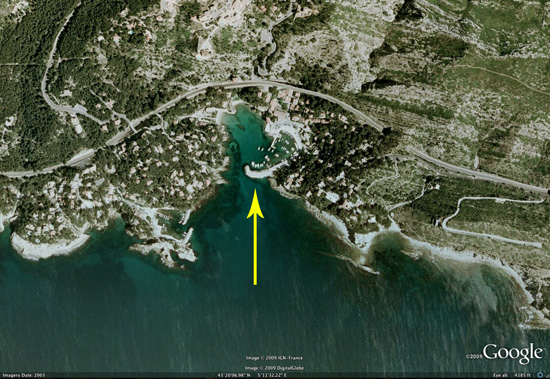 –
–
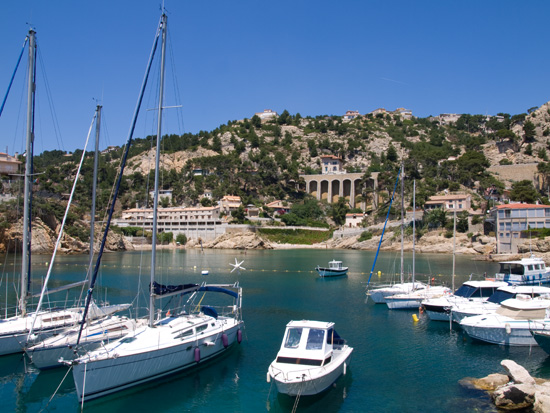
The view from the jetty looking back across the harbor (north) in Redonne, France. The high Roman arches against the steep hillside support the coastal train tracks.
The water was crystal clear, and the surface calm. It is hard not to think about how conducive the Mediterranean was for the birth of human civilization. It is a truly unique marine environment. We’ve been incredibly lucky that the weather has been so good since over the past days. The winds have been very calm and the sun bright, thus the water has been allowed to warm up to a balmy 19-20 (66-68 F) degrees Celsius. When it is windy, cold water upwells from the deep, dropping the surface temperature down significantly. On the previous dive I used a 7mm wetsuit without a hood and was shivering towards the end of the dive; on this dive I was fully hooded. I’ve been used to Floridian temps.
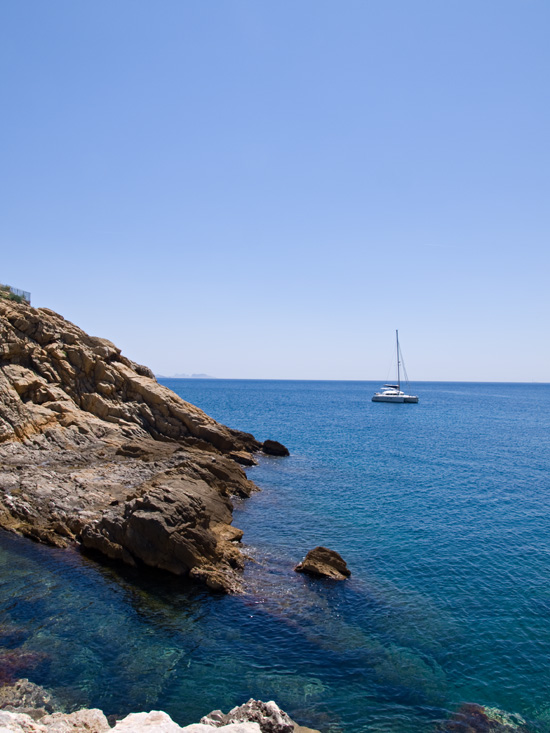
Looking offshore of the jetty in front of the harbor in Redonne. Shore diving in the Mediterranean is a breeze.
We hypothesized that the site’s proximity to a harbor would result in ‘dirtier’ water that would be more conducive to the growth of these non-photosynthetic corallimorphs than the previous location. Yvan had gotten a tip from a diver friend that we could find Corynactis viridis at this site, but that was the extent of the information that we had to go on. No idea as to the depth, bearing, or distance from shore. Subsequent phone calls to his friend for this more specific information went unanswered, so we decided to just hop into the water offshore of the jetty and see what there was to see.
Like yesterday’s dive, there was an abundance of blennies and other bottom dwelling fish. The bottom was covered in considerably more macroalgae, in particular Dichtyota sp., suggesting a more nutrient rich environment.
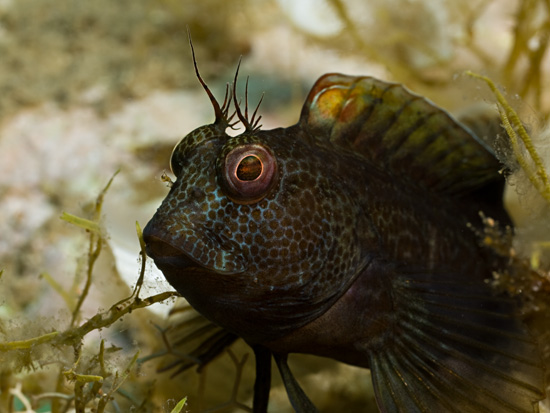
Parablennius tentacularis?
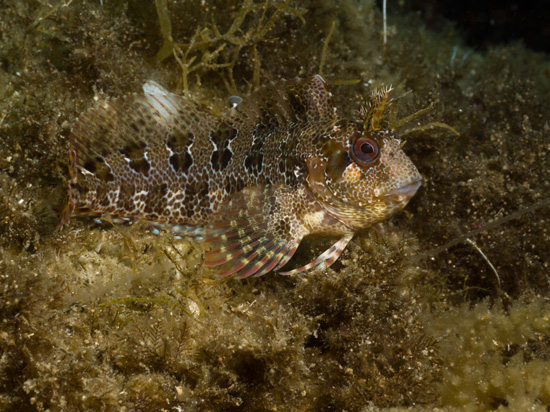
This Parablennius gattorugine (Tom Pot Blenny) is a regal looking fellow perched atop his macroalgae lookout.
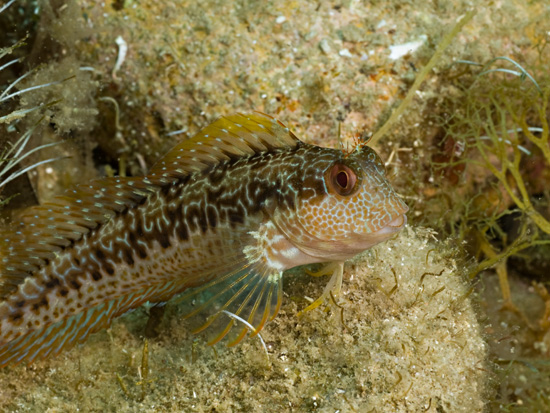
The body of this Parablennius pilicornis is adorned with some electric scribbling.
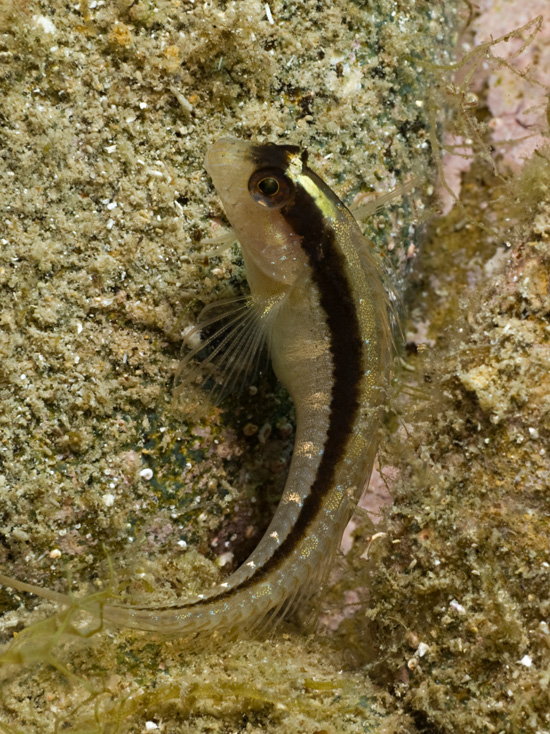
Parablennius rouxi (Long Stripe Blenny).
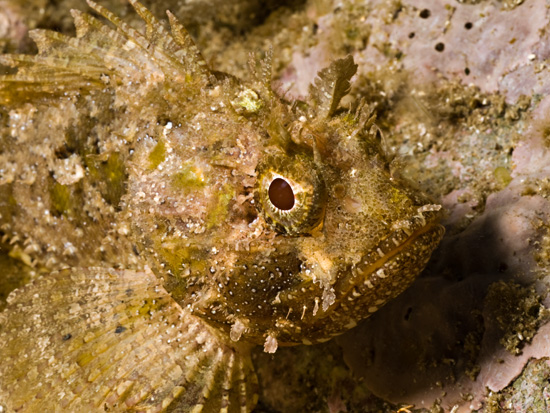
This venomous scorpionfish Scorpaena scrofa blends in remarkably well with the coralline algae and detritus covered rocks.

The brilliantly colored male triplefin Tripterygion tripteronotus.
In addition to the photogenic fish, there were a number if interesting and unusual invertebrates to be found.

Cereus pedunculatus (approx 5 cm in diameter) anemone.
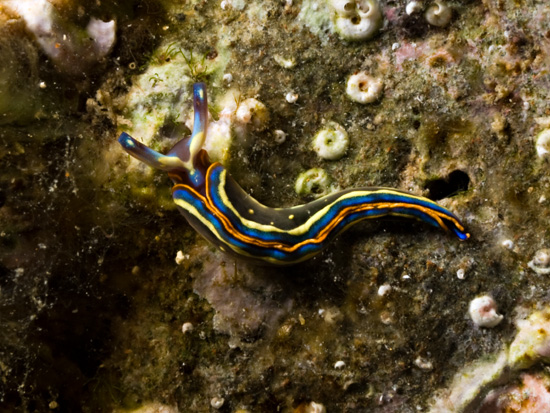
This beautiful sacoglossan sea slug Thuridilla hopei is only about 2cm in length and feeds on Cladophora sp. algae.
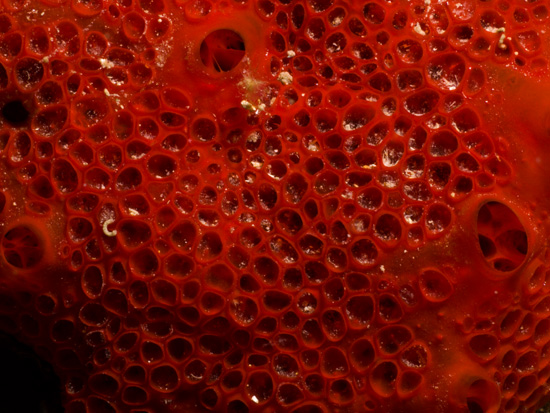
A beautiful red encrusting sponge.
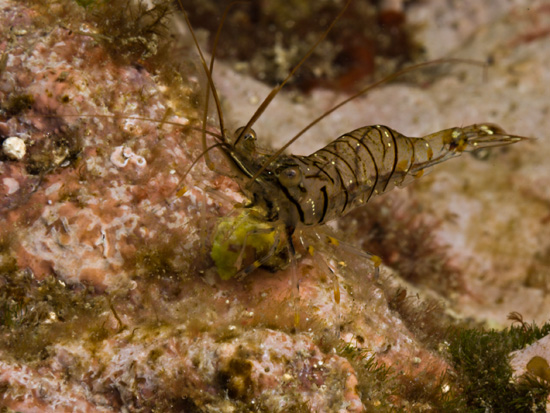
Paelamon elegens is an attractive clear-bodied shrimp with yellow and black banding.
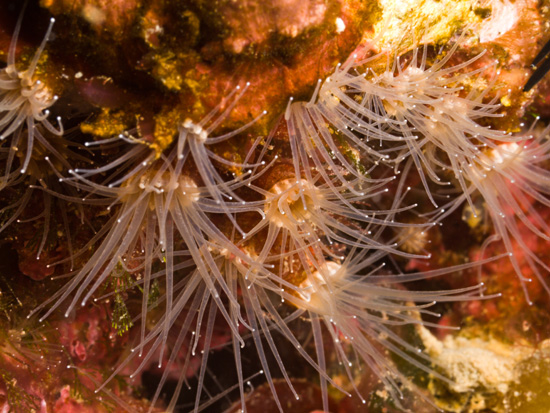
These Epizoanthus arenaceus zoanthids were plentiful on the under-hangs of steep rock faces. Similar in form and function to Corynactis, but alas not…
So while the marine life here in Redonne was interesting and plentiful, we were once again skunked on locating any Corynactis viridis corallimorphs. Later that evening Yvan finally got a return phone call from his friend who related that the C. viridis could be found in about 20m of depth in the middle of the channel that leads into the harbor. I never descended much deeper than 8 m, and stayed relatively close to the rocky shore line, so clearly I was never in the right habitat to find them. C’est la vie.
